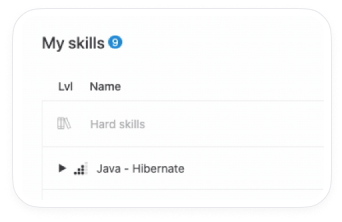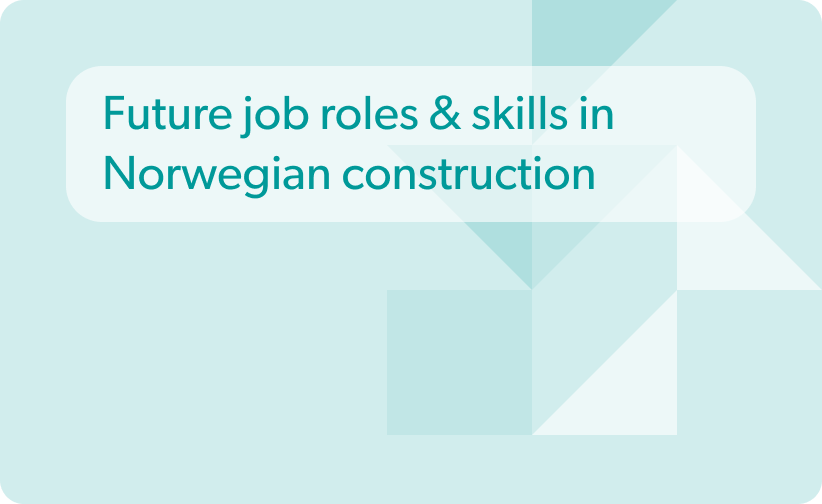Interview with Stephen O’Donnell, Chief Growth Officer at TAtech
Meet Stephen O’Donnell, Chief Growth Officer at TAtech, keynote speaker. We discussed the key challenges and top priorities of recruiting nowadays and beyond.
Challenges and priorities for recruiting in 2022
Q: What are the key challenges in recruiting nowadays? What are the main challenges facing recruiters, probably those who work in the company, for other organizations?
There are many immediate challenges, where recruiters need to solve problems or provide solutions immediately. So, if they have a hiring emergency and need to hire someone today, that’s obviously key in their priority list.
And there are immediate challenges there. Recruitment is often a distress purchase because when someone resigns, then usually it’s a surprise. Usually, it’s the case that employers aren’t prepared for that person to be leaving the company.
If someone resigns on a Friday and you need someone for the job on Monday, you want to hire someone as soon as possible. And your criteria for hiring that person might be compromised by your desperation to find someone quickly.
So, hiring someone quickly is a difficult thing to do. However, recruiters should plan when they think about longer-term things. At the beginning of the year, they should be able to say, “Well, in the next twelve months, we expect to hire x number of design engineers, computer engineers, accountants, and so on, and salespeople.”
Right now, the biggest challenges in front of recruiters will depend on the sector they’re in, the country they’re in, and of course, the growth cycle that their own company might be in.
If you had plenty of time, then you could plan. You can have trainees, you can have apprentices coming through, and you can have people within the company who are looking to progress from one department to the other.
Right now, companies cannot plan as they would normally do because we’ve come through the pandemic and are still in the middle of it. And because there’s a likely recession in the next few months, the budgets will be exceptionally tight if it’s not already hit in some areas.
So, suppose companies are looking to invest in technology. In that case, it’s more difficult now than before because technology not only takes money, but it takes time to embed in the company and fit in with the company processes, and to make sure that adoption is at the level that justifies spending the cash and time on new technology.
Q: What are the top priorities for recruiting today and beyond?
Flexibility
New technology is great, but people look for faster returns on investment whenever they invest in a new ATS, CRM, or other technologies. Of course, salespeople with those technology companies would tell you, “This will return the investment in the space of a few months,” but it’s often not as simple as that.
The key thing for any recruiter at the front line is to be as flexible as possible regarding how they go about what they do.
Some roles they will fill quickly, but it’s unlikely that the quality of higher will be to a standard that they would normally expect.
Retention
Retention is the role that should become a more integral part of the recruitment and team’s responsibility. When you lose workers, there is a lot of pressure on other employees. Replacing those roles isn’t only challenging because of the scarcity of people out there, but it’s so much more expensive. So, if you can pull out the stops to hold on to the staff that you already have, to hold them closer and embrace them, then that’s one of the best ways of avoiding unnecessary recruitment.
Salary expectations
People now expect significant bumps in their salary when they move from one company to another. They expect to move from one job to another for at least a 20% rise in their earnings. And unnecessary recruitment comes around when you lose your employees and workers you would otherwise want to have held on to.
Attention to all employees
So many companies are finding ways to be more flexible for their existing workforce. Where they can pay attention to the needs of their employees that might have been unattended before if someone was feeling unloved. If someone feels that they aren’t supported in their job, then it’s easy for them to choose to look elsewhere rather than fix the situation that they’re in. And when they’re approached regularly by headhunters, agencies, and other employers with the potential to increase their salaries considerably, it’s tempting to think about looking elsewhere.
So, one of the best ways of avoiding that cycle of inflation in salaries and disruption in your workplace is to hold on to the employees and make them feel important, make them feel that they’re part of the team and that they belong with your organization.
I would say that retention is the new recruitment.
COVID-19 impact on recruiting
Q: Is there any difference between working in recruitment now and before the pandemic?
There are many differences in how recruiters work.
Labor market fluctuations
First, the market changes all the time. Since 1987 recruitment has had several recessions and changes in the market where there are many more jobs than candidates or many more candidates than jobs. And those swings in the marketplace when there’s a supply shortage on one side means it’s an excellent time for recruitment. So, an imbalance is significant for recruitment agencies, but a balance is good for employers and growth.
Now we have a pretty extreme imbalance and so many moving variables in the marketplace, which has never really happened to this extent before.
However, if we look at the last recession that we had. The financial crash from 2007 to about 2012 lasted a long time. It started suddenly when there was a crash in the banking and housing sectors, which then affected many other industries because so many businesses are interrelated. Now we talk about the recruitment supply chain, where staff availability isn’t what we want.
The circulation of people in the marketplace is like the blood circulation in the body; it keeps recruitment alive, and companies rely on it.
So, they all have a certain amount of attrition, and they all have a certain number of new vacancies that are created as companies grow, and of course, on the other end, some companies go bust, and people are laid off. So that circle of life, that circulation of people in the marketplace, is essential to a healthy recruitment and unemployment marketplace.
Q: Could you please share some examples of how COVID-19 influences the work of their recruiters?
Let me give you an example. In Scotland, where I live, everyone who is a lawyer must work for one of the 5,000 legal firms. There’s a directory from the Law Society of Scotland that you can get that has a list of every single qualified lawyer in the country. When people graduate from university, they’ll apply for a traineeship with a law firm. That traineeship lasts for two years and then following that, you become a fully qualified lawyer, and you can work anywhere you like.
So, when the crash hit, all law firms were busy in all sectors but always had specialists in the property sector, they suddenly had no work in sales of properties. They couldn’t hire any new trainees because all the senior people in the company who worked in the property sector retrained in other areas of the law. Thus, many people who qualified with a law degree couldn’t get a traineeship, which scarred the law profession for the next three or four years, when only a few new lawyers could enter the industry.
If you look at the LinkedIn profiles of lawyers from that period, there’s a big gap in the number of people where far fewer lawyers came through to the profession.
That’s just a small example. But in many industries, you would have the same thing happening again and again, and the same happened during the pandemic time. This too, will leave a permanent scar on the marketplace for the next 10-20 years.
It’s difficult to predict where the specific effects are coming out of the pandemic, the specific instances where you can point to something and say, well, that’s exactly where it’s come from.
But it is everywhere. Every single industry has been affected; my industry is affected. And you could point to any company on the planet that is also affected by the pandemic, and they’ll either have been quick to respond to it or very slow. And if they’re slow, then their clients will struggle to get service from those companies in the same way as they had before.
Recruiting and technologies
Q: What recruiting technologies will become more important?
Some technologies were already around, which were perfectly in place to help recruiters do their job. So based on platforms for searching and identifying candidates from 10-15 years ago, those already being in place meant that recruiters could work from home and use all the tools they had.
If they have a laptop, then they have access to their ATS. They had access to LinkedIn and wherever they were advertising jobs if it was online. However, recruiters quickly found that their job was designed for being in an office amongst many other people, doing the same job with colleagues, with team members who could compare notes on a minute-by-minute basis. So, when thinking about technologies, at the beginning of the Pandemic, of course, everyone who had been using video before realized that actually it’s not a choice anymore. We need to use video not only to communicate with each other but to deal with clients and candidates, do everything remotely, and schedule things.
The technology allows you to identify candidates more intelligently, so using AI and machine learning to identify those candidates has become more critical and allows recruiters to be much more self-sufficient.
Working as a recruiter these days, you’ll be given specific targets to do, and even though you’re speaking with lots of people daily, it can be quite solitary if you’re working from home. So, it’s also essential for a recruiter to have fast and accurate access to their database of candidates, to the channels to advertise vacancies, and to go to candidates directly.
Labor market technology can reach those candidates to get their attention, and identify the difference between a candidate who is available now and a candidate who could be available in a month or two.
Technologies allow you to build up interactions with candidates from different interests and ages. For example, you might advertise on Reddit, Facebook, LinkedIn, and other social media platforms.
Years ago, when I was a young recruiter and needed to find mechanical and plastic engineers for a company, I would go to the pub near the factory to buy drinks for people and socialize with them to find candidates. Nowadays, the physical pub won’t necessarily be there, but it’ll be an online platform instead.
One more thing that’s happening now is that not everyone works from home. There are lots of jobs where if you’re working in hospitality or lots of other jobs, you physically have to be there.
Job titles and skills most essential for companies
Q: In your opinion, what job roles will need new skills and improvement in the future? What jobs are more changeable?
Several roles can be relatively easily automated. So, if I spoke to someone who was a student in accountancy or training as a lawyer right now, I’d probably advise them to choose another course. Most accountants’ and lawyers’ jobs can be repetitive and, therefore, can be automated. So, lots of those are just not going to exist in the same volume as they were before. There will still be jobs in those sectors, but not nearly as many.
Engineers monitoring a factory that produces plastic components (for example) will also have new job roles and skills. But the ability to do that differs from the skills you build up as a physical, hands-on engineer.
People often talk about the creative elements of jobs. So, if there are jobs where you need to decide quickly based on many factors, then some jobs can absolutely be automated because computers can do these things better and faster, 24 hours a day.
Whereas if there are judgments about, say, managing staff or the quality of the product that’s going out the door, you may need to have actual humans involved. But creative jobs that involve design or interactions with other people, then I can see the case for those being reinforced, but the skills that you need to build there, sometimes they’re being whittled down by the causes of the pandemic.
People in the future who will be most useful to employers are those with a high tolerance for continuous learning of new skills. So, the aptitude for learning new skills is important over the skills you might already have. Right now, if you have a range of skills in, say, programming, learning, or computer skills, you may have shown that you can do that and that you can do that again.
Recruiting importance for the company
Q: How can recruitment or recruiter help, for example, a company expand or get involved in the business’s deployment strategy? Is this a priority for a recruiter nowadays?
If I were an agency recruiter, an external recruiting third-party agency, I would look to do more work with fewer clients, become more embedded with that client company, and offer them different services I would charge for. So typically, an agency would charge a placement fee for someone being hired, which might be 20-30% of that person’s salary.
I would now sell my services as a consultant as well as billing for placement fees, so I can help to advise on the long-term strategy of what skills are available, what to do to anticipate requirements, and to respond to urgent needs for people who leave the company.
So, when an employee goes to his or her boss and says, “I’m sorry, but I’m going to resign,” the employer needs to know how strongly they need to either respond with a counteroffer to win the person over to stay, or accept the fact that nothing’s going to change.
Companies need to have the information to decide whether they’re going to choose option one or two, whether they want to really hold on to this person and push hard to hang on to them, or that they can go down the path and find someone else that might be better and cheaper.
Stay up to date with our newsletter
Every month, we’ll send you a curated newsletter with our updates and the latest industry news.


























 info@hrforecast.de
info@hrforecast.de
 +49 89 215384810
+49 89 215384810






